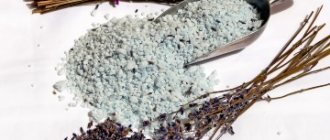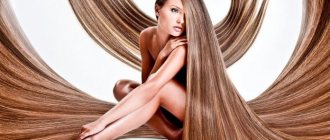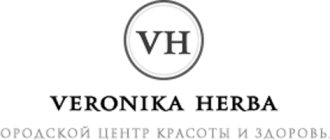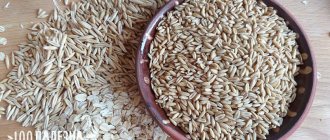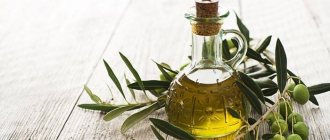How do we understand the phrase “proper nutrition for the skin”? In beauty salons, on the Internet, on TV, we are promised beauty and youth, and are offered new effective procedures. But do they really work? And are all these remedies, diets and painful trips to specialists really necessary? Let’s look at them in more detail later in this article. And if you are generally interested in the topic of healthy food and self-care, then go to our website! We have many more interesting and useful articles waiting for you.
Basic nutrition rules
It is impossible to develop an effective diet that helps the skin stay beautiful and healthy without information about genetic characteristics.
There is even a special section in genetics that studies the influence of genes on the properties of the skin and the features of the external manifestation of age-related changes. It's called dermatogenetics. For example, dermatogenetics can tell us about the rate of collagen production and destruction, vascular strength, and susceptibility to bone destruction. But this is not all the information. Genetic analysis can tell us about glycation, photoaging, antioxidant protection, how the lack of nutrients and microelements affects the condition of the skin, and how prone it is to inflammation or allergies.
A reasonable question is what to do with all this information? The answer is simple - choose those products that will help maintain external youth and health.
Sample diet menu for clear, acne-free skin
Here is an approximate version of how you should eat. Since the diet for beautiful skin will be followed for a long time, later you can create your own menu taking into account your favorite dishes and products. We prepare food according to the above rules. In addition to these meals, you can introduce additional snacks from vegetables, fruits with a small amount of sugar. It’s good if it’s cucumbers, cabbage, green apples.
| Monday | Tuesday | Wednesday | Thursday | Friday | Saturday | Sunday | |
| Breakfast | Wheat porridge, half an orange | Cottage cheese casserole with apple | Buckwheat porridge | Omelette in a dry frying pan with tomato | Millet porridge with pumpkin | Zucchini pancakes, green tea | Omelette with green beans |
| Dinner | Chicken soup with noodles, a slice of black bread | Cabbage soup with beef broth, grain bread | Pea soup with vegetable broth | White fish soup with vegetables | Tomato soup with lentils, bran bread | Borscht with beets and beef broth | Bean soup with chicken and vegetables, a slice of rye bread |
| Afternoon snack | Apple, 20 g walnuts | Pear, 30 g hazelnuts | pumpkin juice | Kefir, 1 tbsp. l. flaxseeds | Tomato juice | Vegetable smoothie | Apple 30 g peanuts |
| Dinner | Brown rice with vegetables | Fish stewed in tomato, cabbage salad | Vegetable stew, boiled egg | Buckwheat with meat, bowl of cucumber salad | Stuffed cabbage rolls with meat and vegetables | Stewed cabbage with beef or chicken | Vegetable and chicken casserole |
During a diet to cleanse your facial skin from acne, it is recommended to eat a lot of greens. It can be added to all dishes. Parsley, onions, dill, sorrel, and salads have a positive effect on the condition of the epidermis.
Products that are good for your skin
Nutrition for perfect skin is one of those external factors that plays a very important role. A good example is collagen synthesis. Collagen is a key structural protein that makes it elastic and strong. It is constantly produced in the body to “repair” damage to the dermis. Its synthesis is a complex process; it requires various substances and trace elements.
Vitamin C plays the main role in the production of this protein; it is necessary for beautiful skin. The thing is that with a lack of this useful element, poor collagen is produced, looser and less durable. Such collagen is destroyed faster and performs its main function worse.
The COL1A1 gene is responsible for the process of assembling collagen fibers; it determines what the balance will be between poor-quality and good-quality collagen. If there are changes in this gene, then the parity between the two types of protein will be broken. And you can return it to normal with the help of vitamin C!
It follows that nutrition to maintain beautiful skin is primarily products that contain ascorbic acid. Richest in vitamin C:
- Acerola (Barbado cherry)
- Dry rosehip
- Red bell pepper
- Kiwi
Another example of how diet affects appearance is fat. Many exclude them from consumption during a diet. And completely in vain. After all, omega-6 and omega-3 fatty acids contribute to the preservation of epidermal cells. Most of them are found in walnuts, flax seeds and fatty fish.
The need for a diet to cleanse facial skin
A person who suffers from acne or severe forms of acne should consult a dermatologist. We are not talking about isolated rashes. They may appear periodically, especially at a young age, there is nothing to worry about. We are talking about problem skin.
In addition to acne, the picture is accompanied by enlarged pores, blackheads, and increased sebum production. The face shines, especially in the warm season. When pressed, columns or sticks of frozen sebum mixed with dirt may come out. It is precisely for such problems that a diet is needed to cleanse the skin.
What tasks does properly selected nutrition perform:
- reduces sebum production, reduces oiliness, removes shine;
- cleanses the body of decay products, toxins, allergens and other harmful substances that negatively affect the skin.
Many women notice breakouts on certain days of their cycle. Pimples also appear when a person eats chocolate or cake, or abuses baked goods. All this confirms the connection with nutrition. A diet for clear skin must be prescribed by a doctor if a person has serious rashes. Additionally, the specialist conducts an examination and prescribes tests.
Drinking regime
Now we know very well that maintaining water balance is very important. But the condition of the epidermis and hair also depends on it. However, this process has its own nuances. The most important thing is that skin hydration is associated with many factors and the amount of water you drink, although important, is not fundamental. As proof, a simple example can be given: skin type does not depend on the amount of fluid in the body, but is determined by the rate of moisture passage through cell membranes.
If we talk about hydration of the epidermis, then the most important thing is not the liters of water you drink, but internal factors. So, a whole complex of different molecules, which is also called natural moisturizing factor (NMF), is responsible for maintaining water balance. It mainly consists of free amino acids, their derivatives, inorganic salts, sugars and urea. All these elements are located in the stratum corneum of the skin, attracting and retaining moisture.
In addition to NMF, aquaporins have a great influence on the hydration of the dermis. Abbreviated as AQP. These membrane proteins act as a kind of “molecular tunnel” for moisture, helping it enter the skin. Epidermal cells contain predominantly AQP3, which transports water and glycerol, which help the dermis maintain hydration. The AQP3 gene of the same name can tell you how efficiently water and glycerol dissolved in it are transported, as well as how effectively the stratum corneum protects the lower layers from excess moisture loss.
The need and importance of facial skin care
The answer to the question of why facial care is needed seems obvious.
To delay the appearance of wrinkles, of course! However, wrinkles are not the only problem that prevents us from looking in the mirror with pleasure. Pimples, blackheads, enlarged pores, peeling... You can avoid the “whims” of your skin only by providing it with proper care: then oily skin will stop shining, and dry skin will not react so sharply to washing with regular tap water. Moreover, the older we get, the more thoughtful the care strategy should become. Of course, no one can win the battle over time, but who wouldn’t want to look five, ten, or even twenty years younger?
Vitamins
When talking about nutrition for healthy skin, one cannot help but touch on the topic of vitamins. Several microelements should be highlighted here:
- “C”, which in addition to the production of collagen is involved in the synthesis of elastin and helps with antioxidant protection.
- “A” is extremely beneficial for the health of the skin, as well as bones, hair, and the normal functioning of the immune and reproductive systems.
- “D”, responsible for the renewal of the stratum corneum of the skin and hair growth.
- "E" is important for protecting cell membranes from free radicals.
- And finally, B vitamins numbered 6, 9 and 12.
The lack of even one vitamin can negatively affect the condition of the skin. Moreover, genetics plays a huge role in the deficiency of beneficial microelements. Thus, changes in the SLC23A1 gene, a molecule that transports vitamin C and is involved in its absorption from food, leads to a decrease in the concentration of ascorbic acid. And this affects the production of collagen in the body. The result is flabby skin that does not cope well with microdamages.
Another gene, BCMO1, encodes an enzyme that converts carotenoids into vitamin A. But in part of the world’s population, beta-carotene (a precursor to vitamin A, found in carrots and pumpkin) is not converted into this useful microelement. Therefore, despite eating the right foods, a person may lose health and beauty in appearance.
What results can you get?
Face before and after
Changing your diet in the first days can trigger the appearance of new acne. You shouldn’t be afraid of this, because this is how the body reacts to changes in eating behavior. About a week after starting the diet, you will notice the first changes: the number of acne will decrease, your complexion will even out, and your shine will decrease.
Also, such a diet is very helpful in cleansing the body and causing slight weight loss. But no diet can become an alternative to treatment and cosmetic procedures, because it is part of complex therapy. Acne can have serious causes, so consultation with a good dermatologist or cosmetologist is necessary.
Products harmful to skin
Of course, food can both help and harm the skin. Moreover, if there is a predisposition, garbage food can cause inflammation, allergies and dermatitis. Below we have collected the main food “villains” that harm the skin.
Sweets
Sweets themselves are not so dangerous, except in cases where, due to individual predispositions, eating them results in allergies and skin rashes. The secret weapon of sweets is creating a comfortable environment for various harmful microorganisms. After all, carbohydrates, which are found in abundance in sweets, are wonderful food for pathogens of a wide variety of diseases.
Salty foods
The main harm that salt can cause to the body is due to moisture retention. Which in turn is associated with a variety of edema, due to which the skin stretches and looks bad. Those same bags under the eyes and a swollen face in the morning are all the tricks of excess fluid that was retained by the salty foods you ate.
Coffee
This is not to say that coffee is harmful to appearance. Yes, it may contain various alkaloids, which are toxins and pose a danger to all cells of the body. But at the same time, the drink made from grains contains magnesium and other useful minerals, as well as a decent amount of antioxidants.
It is important not to forget one thing - not everyone is genetically suited to excessive coffee consumption. Some people can drink liters of it, but for others, after just a couple of cups, the risk of cardiovascular disease increases significantly. The CYP1A2 gene, which we look at as part of our Wellness report, will help you get accurate information on this matter.
Fast food
Fast food and proper nutrition for beautiful facial skin and other parts of the body are absolutely incompatible. They are simply two opposite poles. Fast food is harmful for many reasons. It contains dangerous carcinogens - trans fats, provokes the appearance of cellulite, and instead of useful microelements it supplies the body with “empty” calories, which leads to overeating and excess weight. Also, few people know that flavor enhancers, in particular monosodium glutamate, retain moisture.
Alcoholic drinks
We all know that alcohol is harmful. And for the epidermis it is the most dangerous enemy, whose negative impact can only be compared with fast food.
Let's start with the fact that alcoholic drinks cause dehydration. How does this affect the skin? They dry out, which means they crack, and wrinkles also appear. Another point is the destruction of vitamins by alcohol. They, as we remember, help the body produce elastin and make the skin beautiful and elastic. Add to this the enlargement of pores and the appearance of new rashes, and you get a whole bunch of problems. Any beneficial nutrition for facial skin can be canceled out by alcohol abuse.
Skin moisturizing - mechanism of action
Skin is a protective shell of the human body, which, unlike all other organs and tissues, is in a humid environment on only one side. External - subject to the negative influence of the environment, which dries it out. The dermis and subcutaneous tissue receive the maximum available hydration, while the epidermis most often experiences a lack of moisturizing substances not only from the outside, but sometimes from the inside. This is why doctors constantly remind us of the importance of drinking enough water.
Consequences of poor nutrition
A person who eats incorrectly will experience a whole bunch of different consequences. Of course, not only the skin will suffer, but also other organs. However, the first manifestations will primarily affect the appearance of the body.
Dark spots
The unexpected appearance of age spots is a complex and multifactorial process. Poor nutrition affects it only partially. However, a lack of vitamin B12 may well provoke increased melanin production. And this can affect the body in the form of age spots.
Dry skin
Dry skin is a very common problem in Russia. And its root most often lies in food. The fact is that, due to geographical features, our diet includes very few foods rich in Omega-3 and Omega-6 fatty acids. Namely, these fatty acids help preserve epidermal cells. Another element that promotes long cell life is lutein. It is found in abundance in spinach, peas and parsley.
Circles under the eyes
The cause of circles under the eyes may be the low rate of salt excretion by the kidneys and the accumulation of fluid in the body. And genetics may be to blame for this.
The ADD1 gene is responsible for the first, and CYP11B2 is responsible for the second. In addition to circles under the eyes, side effects of unfavorable variants of these genes can include swelling and increased blood pressure, as well as improper functioning of the kidneys and liver. In this case, you should avoid foods that contain a lot of potassium (potatoes, fruits and dried fruits).
Wrinkles
How does poor nutrition affect the appearance of wrinkles? It's simple - hamburgers contain extremely low amounts of vitamins and antioxidants - anthocyanins, flavonoids, copper and carotenoids. This provokes the appearance of wrinkles and general aging of the body.
How to properly carry out home hydration and nutrition treatments
It is no coincidence that morning creams are considered moisturizing creams, and evening creams are nourishing ones. This is due to biological rhythms, because In the morning the skin is less receptive. In order for skincare procedures to have maximum effect, the following sequence of actions should be followed:
- Cleansing. Thoroughly cleanse your skin of makeup, sebum and dust. Wash your face with foam suitable for your type.
- Toning. Use a tonic; it will not only moisturize the skin, but also increase the effectiveness of subsequent manipulations. Don't neglect this stage; the right tonic can work wonders.
- Hydration or nutrition. Use the cream by applying it with light patting movements on the face, neck and décolleté.
It is impossible not to mention masks at this stage. Moisturizing or nourishing - they are the key products of any care. It is best to use them in the evening, when the effectiveness will be maximum.
When selecting, keep in mind that they contain a large number of biologically active substances, which can lead to allergic reactions if you are predisposed to them. Before purchasing, consult a cosmetologist.
It is advisable to take courses in salon procedures several times a year aimed at nourishing and moisturizing the skin, and between them use cosmetics specially selected by a specialist specifically for your skin.
What do world stars eat?
Appearance for world stars is more than just appearance - along with acting, it is one of the most important tools necessary for their professional activities. It is not uncommon for an actor to repeatedly gain and lose weight during his career, use tons of makeup, and at the same time maintain his skin in perfect condition. There are many vegetarians and even raw foodists among Hollywood stars. So, which products are the most popular among celebrities?
- Avocado is recommended by Victoria Beckham, both for food and for cosmetic masks.
- Milkshakes with nuts, bananas and blueberries - a recipe from the popular Korean singer Goo Ha Ra.
- Another Korean beauty, the famous actress Ko Hyun-jung, prefers to give up spicy, salty and smoked dishes and wash everything down with grapefruit tea.
- Angelina Jolie practices complete abstinence from fast carbohydrates in the form of baked goods. She makes up for the lack of carbohydrates with meat, nuts and legumes.
- Madonna, Halle Berry and many other actors prefer to eat exclusively vegetables and fruits, occasionally adding seafood to their diet.
- Korean actor Song Joong Ki believes that the secret to healthy skin is eating apples and yogurt every day.
How to care for oily skin?
Before selecting care products, make sure you have correctly identified your skin type. If oily shine is noticeable only in the T-zone (on the forehead, nose and chin), then this is a combination type. In addition, only 10% of people still have oily, porous skin after age 35—the sebaceous glands can reduce sebum production by age 25 [2].
If you are sure that your skin type is correct, follow the appropriate care recommendations.
How to clean
It is recommended to cleanse oily facial skin 2 times a day. Apply foam or gel to damp skin using massaging movements (preferably with a sponge - it will better cleanse the pores). Do not use antibacterial or any alkaline soap for washing, otherwise you will dry out the epidermis and provoke increased sebum production. Rinse off with warm water, then rinse your face with cool water to tighten pores. After washing, wipe your face with toner or lotion with zinc oxide and salicylic acid.
Important! Do not wash your face with hot water - it increases the activity of the sebaceous glands.
For deep cleansing, use scrubs and peels with soft ingredients. One or two treatments per week are enough to remove dead cells and avoid clogged pores. If you use scrubs and peels more often, you can provoke increased oil secretion and thickening of the skin.
How and why to moisturize
The less moisture in the skin, the more active the sebaceous glands work. To moisturize, you can use a fluid cream or gel with a light texture (for example, “Instant Matte” aqua cream). These products usually contain hyaluronic acid, glycerin, collagen or aloe. Most creams for oily skin, in addition to moisturizing, also have a mattifying effect.
Important! In winter, apply moisturizer no later than an hour before going outside, otherwise your skin will become dehydrated. Use evening cream at any time of the year half an hour to an hour before bedtime.
For salon or home care, moisturizing masks for oily facial skin containing plant extracts, oils and antibacterial components are suitable.
